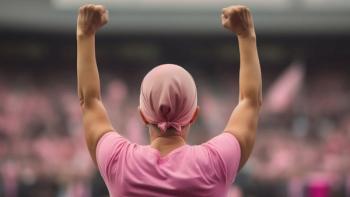
Acupuncture Reduces Symptom Burden in Patients With Multiple Myeloma
Acupuncture is a powerful resource that has been around for thousands of years. The traditional Chinese medicine is effective in treating chronic pain and headaches, and is now being used by many patients with cancer as a complementary therapy alongside medicinal treatment.
Acupuncture is a powerful resource that has been around for thousands of years. The traditional Chinese medicine is effective in treating chronic pain and headaches, and is now being used by many patients with cancer as a complementary therapy alongside medicinal treatment.
Researchers from Memorial Sloan Kettering Cancer Center (MSK) in New York City and MD Anderson Cancer Center in Houston, examined if acupuncture could help manage symptom burden of hematopoietic stem cell transplantation (HCT) in patients with multiple myeloma.
HCT used in combination with high-dose chemotherapy can offer patients a chance for durable remission. However, patients who undergo this can experience fatigue, disturbed sleep, lack of appetite, nausea, drowsiness and physical weakness.
Medical teams currently rely on medication to manage these side effects, but patients on them still experience high symptom burden, said Gary E. Deng, M.D., Ph.D., medical director, Integrative Medicine Service at MSK, in an interview with CURE.
“Combining non-drug therapy with drug therapy for better symptom management is the future direction of cancer supportive care,” he said.
In the trial, patients underwent high-dose melphalan — a prescription chemotherapy drug used as a conditioning treatment prior to HCT — followed by autologous HCT, which is when the cells used in the transplant are the patient’s own.
Among the 60 patients participating, some received true acupuncture, while others received sham acupuncture, a research technique that removes the non-specific effects of acupuncture. This happened once a day for five days, starting the day after chemotherapy.
Patients and clinical evaluators did not know which patients were assigned to either group.
Researchers used the MD Anderson Symptom Inventory (MDASI) at baseline, during transplantation and at 15 and 30 days’ post-transplantation to evaluate the patients. The MDASI is used to assess the severity of symptoms experienced by patients with cancer and the interference with their daily living.
They determined that true acupuncture did not show significant reductions in overall MDASI core symptom scores and symptom interference scores during transplantation, at 15 days and at 30 days’ post-transplantation.
However, acupuncture was well tolerated among patients with few adverse events, noted the authors.
True acupuncture helped reduce nausea, lack of appetite and drowsiness at 15 days.
Among those who received sham acupuncture, they were more likely to increase pain medication use post-transplantation.
Deng plans to take this research further. He hopes to get funding to support a larger study, which would allow him to examine acupuncture to alleviate symptom burden of HCT with a bigger patient population.
“This is the first study that suggests acupuncture being a non-drug therapy that reduces symptoms and use of pain medications in bone marrow transplant patients,” said Deng. “If confirmed in a larger study, we would have one more therapy that helps those patients through the course of transplantation.”




